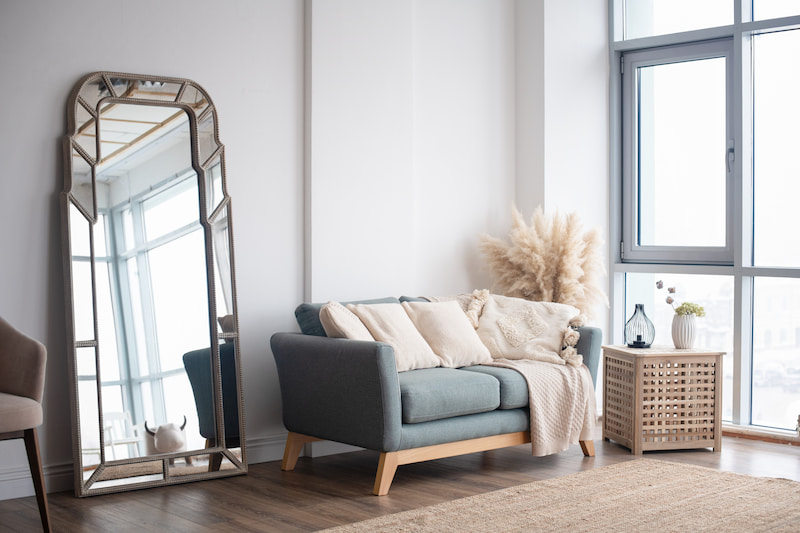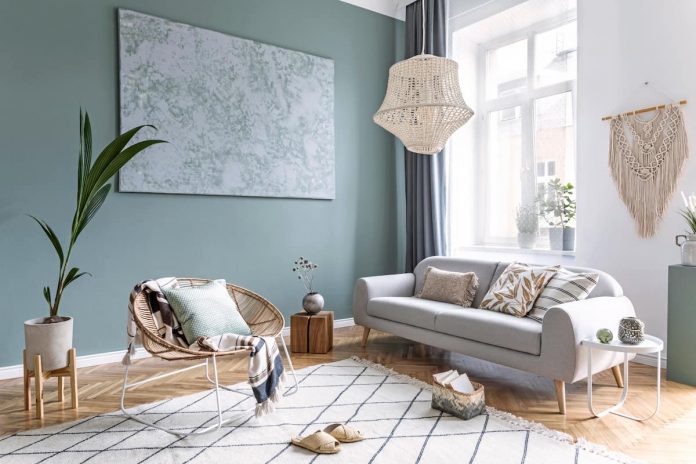If you have the opportunity to plan your house completely, you can save a lot of money when it comes to providing good natural lighting to areas that generally have more difficulty receiving good sunlight. To try to minimize the existence of areas of the house with difficult access to sunlight, it is advisable to avoid dividing the house into many spaces. We already told you when we talked about the importance of choosing the right types of lighting for each space in the house.
Within the possibilities, and maintaining the functionality of the house, to guarantee an optimal distribution of the natural light that we obtain, it is advisable to maintain the maximum possible amplitude throughout the house .
Another tip with excellent results is that you try to assign an entrance of natural light to each room of the house , or at least to the main areas such as the dining room, kitchen, living room and bedrooms. For the bathroom, the corridor or the secondary rooms in which we do not plan a main entrance of light, there is an interesting, effective and discreet option: skylights and pavers. With them, you can get a lot of natural light to illuminate your house in an elegant and simple way.
Tips to maximize the impact of natural light in your home
Regardless of the amount of natural light coming into your home, there are a number of tricks you can use to maximize the lighting effect and make the most of the sunlight you do receive.
1. Use blinds and thin curtains
If before we talked about the importance of windows to facilitate the entry of the sun into the house, we must not forget the blinds or curtains that accompany them . If you put thick curtains, the sunlight coming through the window will be muffled and the sensation of light will be reduced. This can be interesting if you are lucky enough to have large windows with good lighting, as it will help you achieve a relaxing effect with a softer light in the hours of maximum sunshine.
But if, on the other hand, you need to make the most of every ray of sunlight that enters through your window , it will be advisable to install thinner curtains or blinds that let sunlight through. In this way, you will make the most of the light while the blinds or curtains prevent you from seeing the interior of the house.
Another obstacle that we know well, but that directly affects the free circulation of light inside the house, are opaque doors. If your home is very dark, consider the possibility of installing doors in which glass (transparent or translucent) is the protagonist. In this way, you will get a lot of light into most of the different rooms of the house.
2. Use light colors on walls and floors to maximize natural light
The application of light colors on the walls of your house will allow you to make the most of the sunlight that enters it, since it will not be absorbed by the different surfaces . This will create a more intense light effect in the room and give the rooms a more spacious feel. The use of colors such as white, beige… both on the walls and on the floor and furniture will be your best ally to distribute light evenly.
3. Use mirrors strategically to brighten a room.
The use of mirrors in key points of the house will be another point in your favor to make the most of the distribution of light. In almost all houses there are dark areas that are difficult for natural light to reach . These points are usually the hall, the corridor… Identify the areas of your house with the most dark spots and decorate the nearby areas, where there is enough light, with a mirror that matches the decoration of your house.
This will distribute the light and lighten the darkest area. Sunlight does not need to reflect directly off the mirror. If the place where you place the mirror has medium light , it will be enough for it to be partially distributed throughout the area.

4. Avoid tall furniture that blocks light
Sometimes it is worth giving up one decorative element to obtain or improve another . This would be the case of wall units: although they dress up the room a lot thanks to their considerable dimensions, they can be counterproductive when it comes to achieving optimal light distribution . For this reason, it may be a good idea to have low furniture that allows the distribution of light and does not act as a screen. This is another key point to keep in mind when lighting a house with natural light.
The partitions are another of the great enemies of the distribution of natural light throughout the house. Although it is true that it is not always easy to achieve an open plan house (ideal situation in which light would circulate freely), it is possible to consider doing without these walls, which do not play a determining role in the distribution of the house. Sometimes, simply by knocking down a wall that obstructs an important point of natural light, we can achieve a significant increase in the level of light in the house. If at any time in the house you do not want to do without a partition, but you need light to pass through, you can always create a glass partition as an alternative to the traditional wall. In this way, in addition to maintaining that feeling of a wall, all the light from the neighboring room will enter that other space.
With these simple tips, we have seen how to illuminate a house with natural light so that the use of natural light in your home improves significantly. And do not forget to consult our specialists who will help you get more natural light at home.




